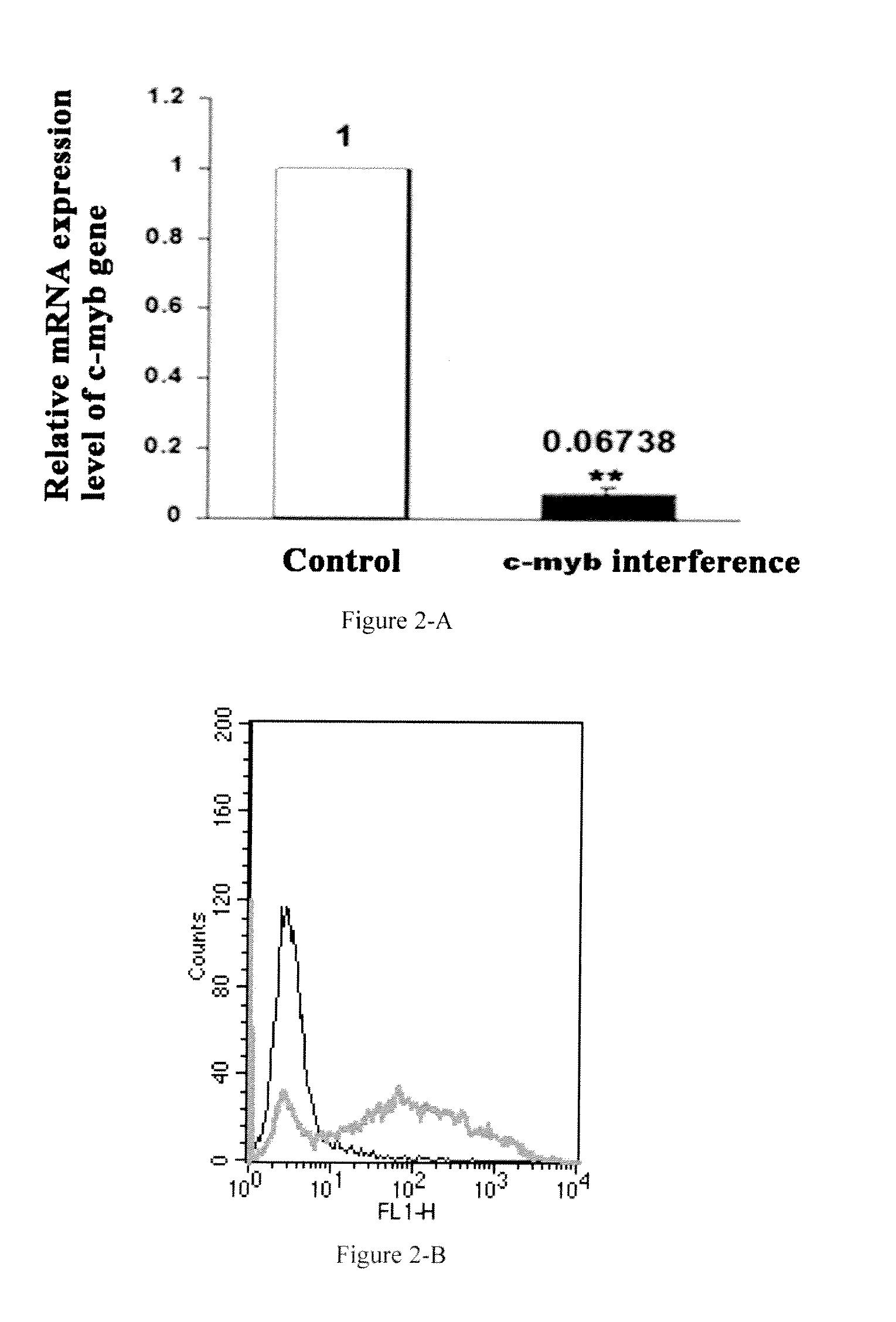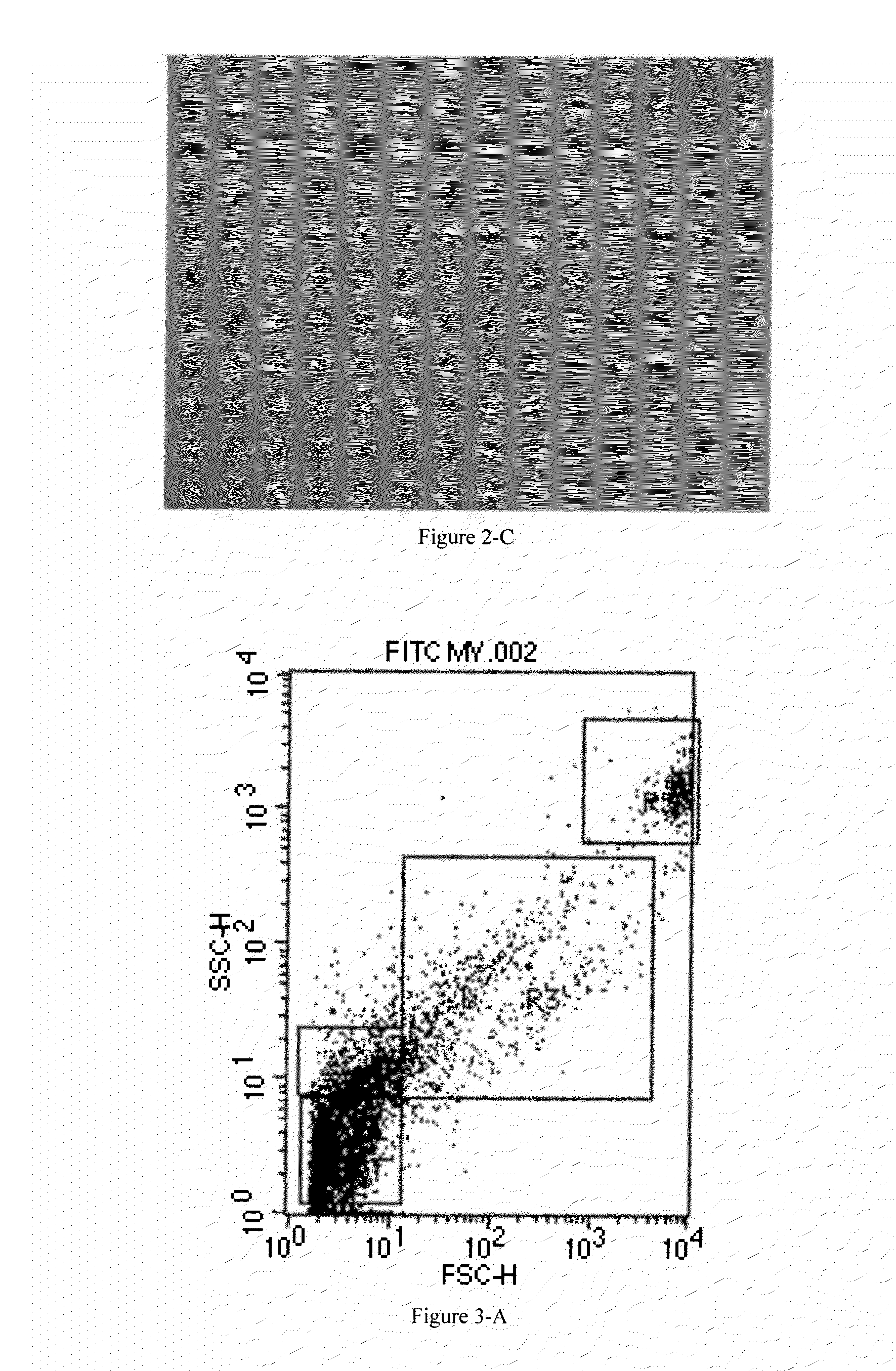Microvesicles carrying small interfering rnas, preparation methods and uses thereof
a technology of microvesicles and rnas, which is applied in the field of microvesicles carrying small interfering rnas, preparation methods, etc., can solve the problems of complex operation and long time of research, difficult to solve, and high difficulty in technology
- Summary
- Abstract
- Description
- Claims
- Application Information
AI Technical Summary
Benefits of technology
Problems solved by technology
Method used
Image
Examples
example 1
Separation and Detection of the Cellular MVs in the Serum / Plasma and Cell Culture Medium
[0130]Differential centrifugation is used in this example to separate cellular MVs from serum / plasma or cell culture medium:
[0131]Specifically, serum / plasma or cultured cells is centrifuged under 300 g for 5 min to get the supernatant; (2) the supernatant is centrifuged under 1500 g for 20 min to get the supernatant; (3) the supernatant is centrifuged under 10000 g for 30 min to get the supernatant; (4) the supernatant is centrifuged under 110000 g for 70 min to get the precipitates which are cellular MVs.
[0132]The separated cellular MVs are observed under transmission electron microscope (TEM). Cellular MVs precipitates are fixed in 2.5% of glutaral at 4° C., overnight rinsed three times with PBS for 10 min each, then fixed in 1% of osmium tetroxide at room temperature for 60 min. The fixed samples are embedded with 10% of gelatin and then refixed with glutaral at 4° C. After that, the samples a...
example 2
Transfection of siRNA into Donor Cells
[0134]In this example, fluorescence labeled siRNA is transfected into cells according to the following steps and the transfection efficiency is detected.
[0135]Firstly, siRNA sequence is designed for different sites of human c-myb gene sequence:
[0136](sense strand+loop+antisense strand): 5′-GGTGGAACAGAATGGAACATTGAACAAG TGTTCCATTCTGTTCCACC TT-3′;
[0137]Meanwhile, a random sequence is designed as the negative control:
[0138](sense strand+loop+antisense strand): 5′-GACTTCATAAGGCGCATGC TTGAAGAAG GCATGCGCCTTATGAAGTC TT-3′.
[0139]Furthermore, the above-mentioned designed siRNA is synthesized commercially, siRNA against c-myb gene is labeled with green fluorescent dye FITC.
[0140]The siRNA is transfected into human monocytes / macrophages cell line THP-1 cells (Type Culture Collection of Chinese Academy of Sciences, Shanghai, China) with liposome Lipofectamine 2000 (Invutrigen, US), the detailed method is as follows:[0141](1) THP-1 cells are cultured in the R...
example 3
Transferring of Cellular MVs Carrying with siRNA into Receptor Cells
[0158]In this example, cellular MVs of THP-1 cells transfected with c-mybsiRNA are collected to detect their loading efficiency. Meanwhile, the cellular MVs are added to target cells to detect their efficiency of transferring into the target cells.
[0159]Human monocytes / macrophages cell line THP-1, which plays an important role in the inflammatory response is selected as the study object. THP-1 cells are incubated in the 1640 medium (Gibco, US) supplemented with 10% fetal calf serum (FBS) (Gibco, US) at 37° C., 5% CO2. First, the THP-1 cells transfected with c-mybsiRNA are prepared according to the method of siRNA transfection in example 2.
[0160]Next, according to the method of separating the cellular MVs in example 1, THP-1 cells transfected with c-mybsiRNA are separated.
[0161]Then, the loading efficiency of siRNA in cellular MVs separated is detected by flow cytometry.
[0162]The result is shown in FIG. 3-A. During d...
PUM
| Property | Measurement | Unit |
|---|---|---|
| mean diameter | aaaaa | aaaaa |
| size | aaaaa | aaaaa |
| volume | aaaaa | aaaaa |
Abstract
Description
Claims
Application Information
 Login to View More
Login to View More - R&D
- Intellectual Property
- Life Sciences
- Materials
- Tech Scout
- Unparalleled Data Quality
- Higher Quality Content
- 60% Fewer Hallucinations
Browse by: Latest US Patents, China's latest patents, Technical Efficacy Thesaurus, Application Domain, Technology Topic, Popular Technical Reports.
© 2025 PatSnap. All rights reserved.Legal|Privacy policy|Modern Slavery Act Transparency Statement|Sitemap|About US| Contact US: help@patsnap.com



